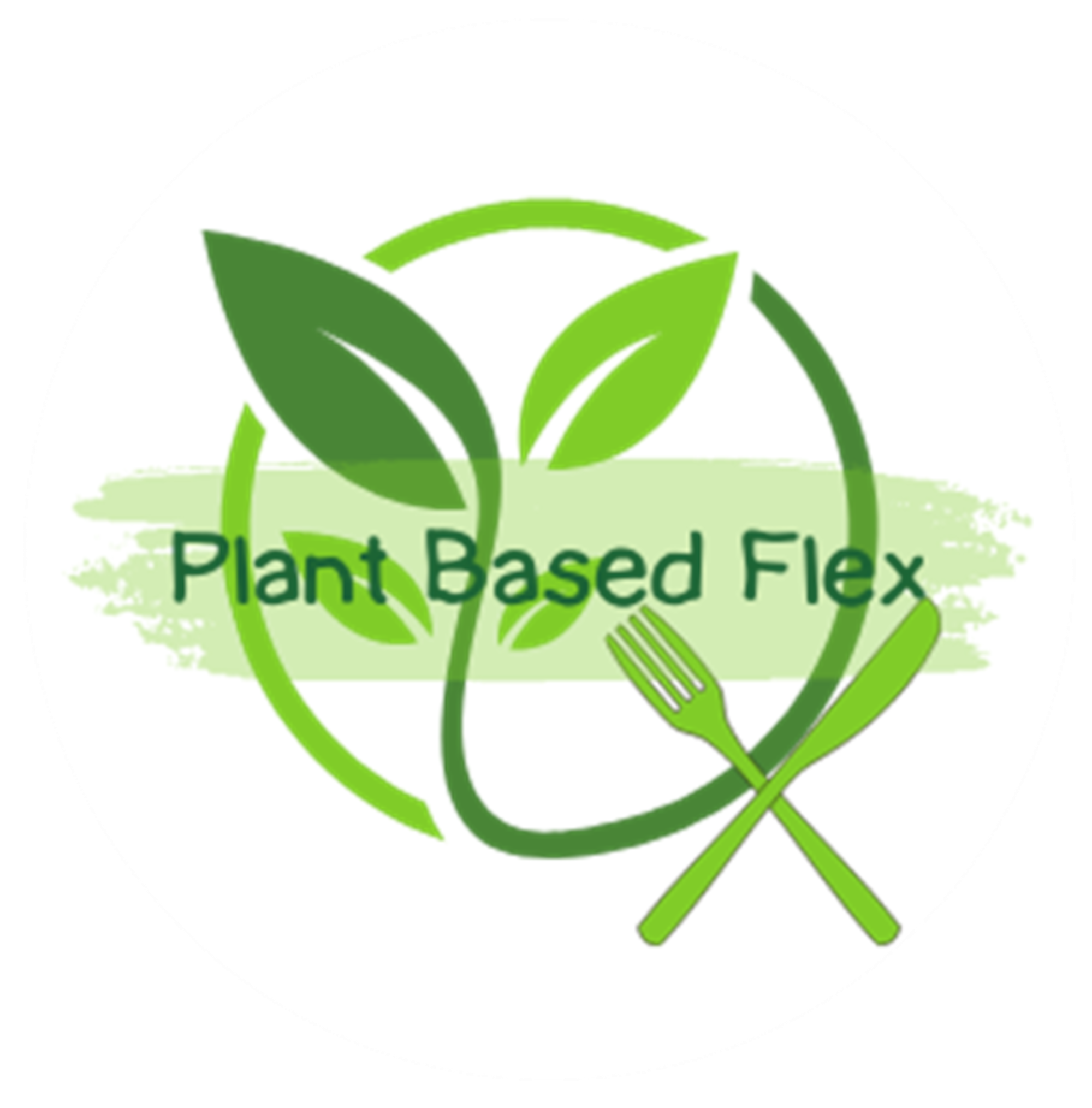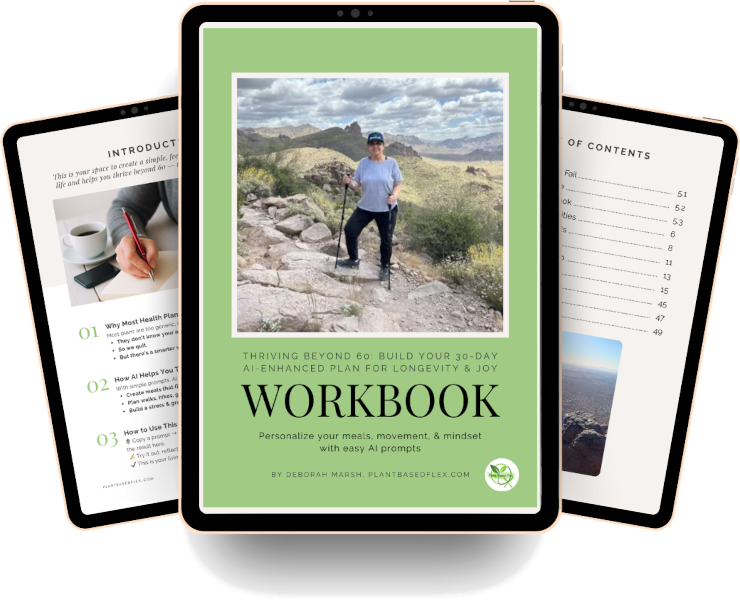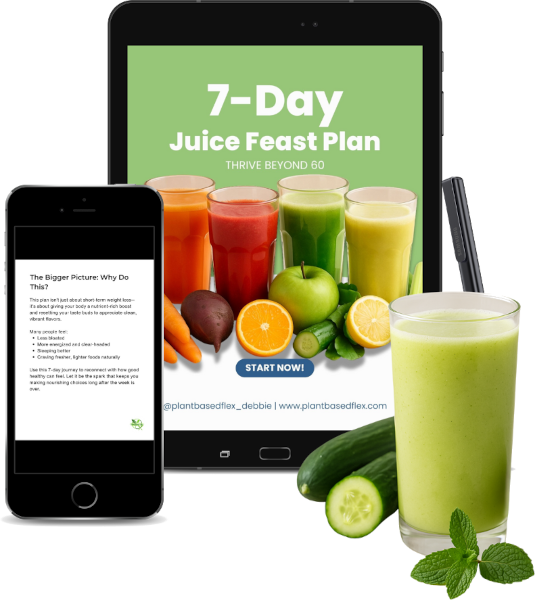September Power Foods
Early fall is prime time for crisp fruit, hearty greens, and comfort food that still loves your heart, brain, and metabolism. Here are my top ten September foods with simple ways to enjoy them, plus ten easy recipes with nutrition info so you can plan with confidence and flex your plant power.

Fresh September Power Foods: 10 Picks to Help You Thrive Beyond 60
Early fall is prime time for crisp fruit, hearty greens, and comfort food that still loves your heart, brain, and metabolism. Here are my top ten September foods with simple ways to enjoy them, plus ten easy recipes with nutrition info so you can plan with confidence and flex your plant power.
The Top 10 Fresh September Foods
1) Apples
- Why they matter: Pectin and polyphenols support gut health, LDL cholesterol, and steady blood sugar.
- Best way to eat: Keep the skin on. Pair slices with nut butter or crumble walnuts over warm stewed apples.
- Longevity tip: Regular apple intake is associated with cardiovascular support and a healthier microbiome.
2) Pears
- Why they matter: Soluble fiber for digestion and satiety, gentle on the stomach.
- Best way to eat: Ripe with skin, diced into salads and grain bowls, or lightly poached with cinnamon.
- Longevity tip: High fiber patterns correlate with healthy weight and lower chronic disease risk.
3) Grapes (red and Concord)
- Why they matter: Resveratrol and anthocyanins for vascular and brain support. Hydrating for hikes.
- Best way to eat: Fresh with skins. Roast briefly to concentrate flavor or toss into salads.
- Longevity tip: Dark grape polyphenols support healthy blood pressure and endothelial function.
4) Figs
- Why they matter: Fiber, potassium, and gentle prebiotic effect.
- Best way to eat: Fresh with skins. Split and top with yogurt or tahini. Low slow roast to caramelize.
- Longevity tip: Potassium rich foods support blood pressure and muscle function.
5) Plums
- Why they matter: Anthocyanins and vitamin C for antioxidant support, sorbitol for regularity.
- Best way to eat: With the skin. Grill or roast to soften and sweeten.
- Longevity tip: Deep purple pigments are linked with cognitive and vascular health.
6) Winter squash (butternut, delicata, acorn)
- Why they matter: Beta carotene for eyes, skin, and immune function, plus fiber and steady carbs.
- Best way to eat: Roast and pair with olive oil or seeds to boost carotenoid absorption.
- Longevity tip: Carotenoid rich eating patterns align with better metabolic and skin aging markers.
7) Kale and hearty greens
- Why they matter: Vitamins K, A, C, lutein, and natural nitrates for vascular health.
- Best way to eat: Lightly massage raw leaves with lemon, or steam and finish with olive oil.
- Longevity tip: Dark leafy greens show consistent links with slower cognitive decline trends.
8) Beets
- Why they matter: Dietary nitrates for circulation and stamina, betalains for antioxidant support.
- Best way to eat: Roast or steam. Add a vitamin C food at meals to support iron absorption.
- Longevity tip: Nitrate rich veggies support blood flow for heart and brain health.
9) Cauliflower
- Why they matter: Glucosinolates that form sulforaphane, plus fiber and vitamin C.
- Best way to eat: Chop and let sit 30 to 40 minutes before cooking to maximize sulforaphane. Steam or roast.
- Longevity tip: Cruciferous veggies are linked with healthy aging markers.
10) Green beans
- Why they matter: Fiber, folate, and silicon for bone and connective tissue.
- Best way to eat: Steam until crisp tender, then dress with lemon, olive oil, and nuts.
- Longevity tip: Regular non starchy veggie intake supports weight and glucose control.
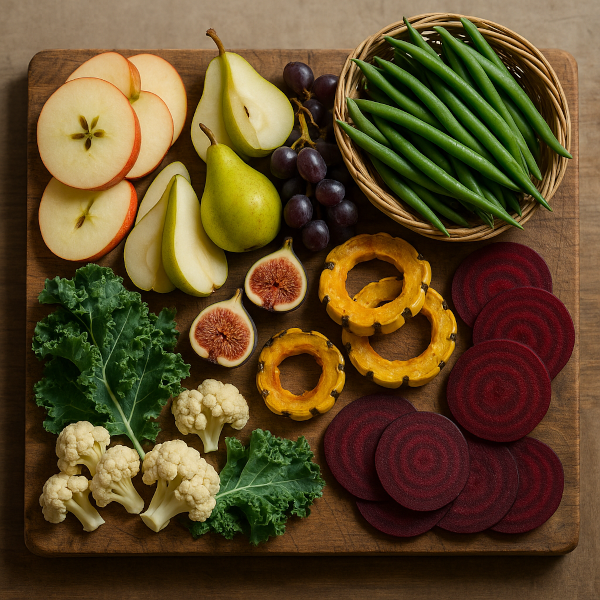
Shopping and Storage Notes
- Choose color: Seek deep greens, vivid oranges, and rich purples. Color often signals antioxidants.
- Store smart: Keep apples and pears chilled in the crisper. Figs are fragile and best within two days. Grapes like breathable containers. Squash stores well in a cool dry place.
- Prep to win: Wash and dry greens, roast a tray of squash and beets on Sunday, and keep a jar of lemony olive oil dressing ready. Your weekday self will thank you.
10 Simple September Recipes
Each includes a quick “why it helps” and an estimated nutrition panel per serving so you can thrive beyond 60 with confidence.

Harvest Kale, Apple and Roasted Squash Bowl
Yield: 2 servings
Prep Time: 10 minutes
Cook Time: 20 minutes (if roasting squash)
Total Time: 30 minutes
Ingredients
- 3 cups kale, chopped and stems removed
- 2 tsp lemon juice
- Pinch sea salt
- 1 cup cooked quinoa
- 2 cups roasted butternut or delicata squash, cubed
- 1 crisp apple, thinly sliced
- 2 tbsp pumpkin seeds
- 1 tbsp olive oil
- 1 tsp apple cider vinegar
Directions
- Place kale in a bowl. Add lemon juice and a pinch of salt. Massage for 30 to 60 seconds until tender.
- Divide quinoa between two bowls. Top with roasted squash, apple, and pumpkin seeds.
- Whisk olive oil with apple cider vinegar. Drizzle over bowls and serve.
Why it helps
Carotenoids from squash plus vitamin C and polyphenols from apple support immune and vascular health. Kale adds vitamin K and lutein.
Estimated nutrition per serving
~460 kcal, 12 g protein, 66 g carbs, 11 g fiber, 16 g fat. Notables: vitamins A, C, K, magnesium, potassium.

Beet, Grape and Walnut Salad with Citrus Dijon
Yield: 2 servings
Prep Time: 10 minutes
Cook Time: 0 minutes
Total Time: 10 minutes
Ingredients
- 2 medium roasted beets, sliced
- 1 cup red or Concord grapes, halved
- 2 cups arugula or mixed greens
- 1 oz walnuts, chopped
- 1 tbsp olive oil
- 1 tbsp orange juice
- 1 tsp Dijon mustard
- Pinch salt
Directions
- In a large bowl combine greens, beets, grapes, and walnuts.
- Whisk olive oil, orange juice, Dijon, and salt. Toss with the salad and serve.
Why it helps
Beet nitrates support circulation. Grapes add polyphenols. Walnuts provide brain friendly fats.
Estimated nutrition per serving
~320 kcal, 7 g protein, 27 g carbs, 6 g fiber, 22 g fat. Notables: vitamin C, folate, omega 3 ALA, potassium.
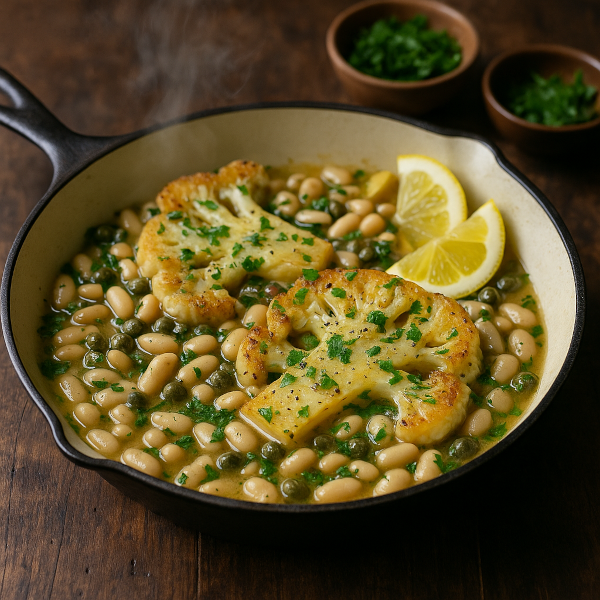
Cauliflower and White Bean Piccata
Yield: 3 servings
Prep Time: 15 minutes
Cook Time: 12 minutes
Total Time: 27 minutes
Ingredients
- 1 medium cauliflower, sliced into cutlets or large florets
- 1 tbsp olive oil
- 1 can white beans, rinsed and drained
- 2 tbsp capers
- Juice of 1 lemon
- 1 cup low sodium vegetable broth
- 2 tbsp fresh parsley, chopped
- Salt and pepper to taste
Directions
- Chop the cauliflower and let it rest 30 minutes to support sulforaphane formation.
- Heat olive oil in a large skillet over medium heat. Sear cauliflower until golden on both sides.
- Add white beans, capers, lemon juice, and broth. Simmer 5 to 7 minutes until slightly reduced.
- Season to taste. Sprinkle with parsley and serve.
Why it helps
Cruciferous compounds support cellular defense. Beans add fiber and steady protein.
Estimated nutrition per serving
~260 kcal, 12 g protein, 36 g carbs, 10 g fiber, 6 g fat. Notables: vitamin C, folate, manganese.
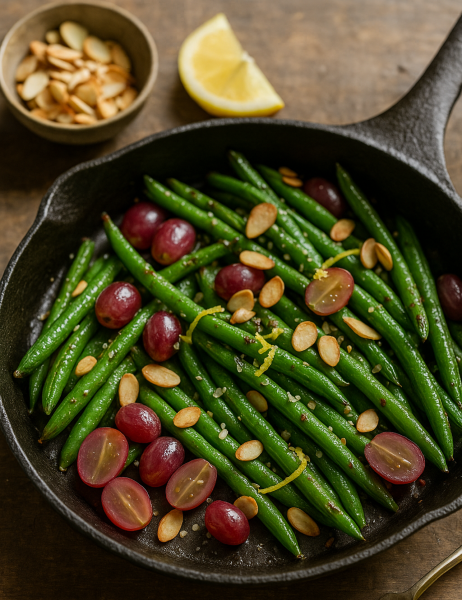
Green Bean, Grape and Almond Skillet
Yield: 2 servings
Prep Time: 10 minutes
Cook Time: 8 minutes
Total Time: 18 minutes
Ingredients
- 3 cups green beans, trimmed
- 1 tsp olive oil
- 1 cup red grapes, halved
- 2 tbsp sliced almonds
- 1 tsp lemon zest
- 1 tsp lemon juice
- Pinch salt
Directions
- Heat oil in a skillet over medium heat. Add green beans and cook 4 to 6 minutes until crisp tender.
- Stir in grapes and cook 1 minute.
- Remove from heat. Add almonds, lemon zest, lemon juice, and a pinch of salt. Toss and serve warm.
Why it helps
Fiber rich green beans meet grape antioxidants. Almonds add vitamin E for skin support.
Estimated nutrition per serving
~210 kcal, 6 g protein, 26 g carbs, 7 g fiber, 10 g fat. Notables: vitamins C and E, folate, potassium.
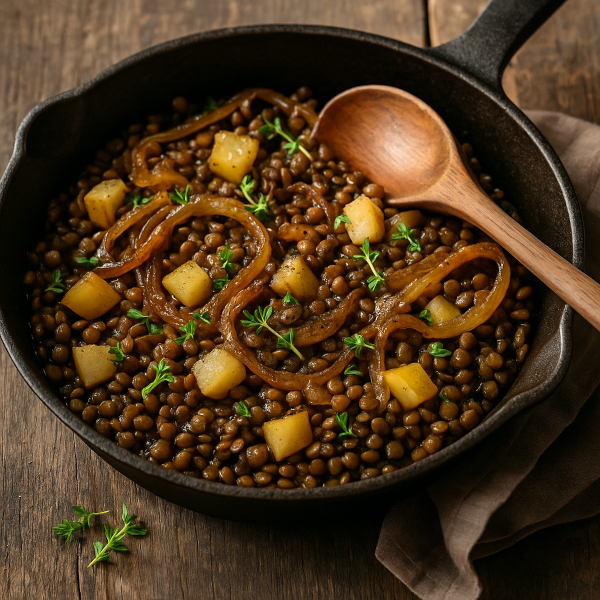
Pear and Lentil Skillet with Caramelized Onions and Thyme
Yield: 3 servings
Prep Time: 10 minutes
Cook Time: 25 minutes
Total Time: 35 minutes
Ingredients
- 1 large onion, thinly sliced
- 1 tbsp olive oil
- 1 cup cooked green or brown lentils
- 2 ripe pears, diced with skin
- 1 tsp fresh thyme leaves
- Splash of balsamic vinegar
- Salt and pepper to taste
Directions
- Warm olive oil in a skillet over medium low heat. Add onions and cook 12 to 15 minutes until deep golden.
- Add lentils and pears. Stir and cook 3 to 4 minutes to warm through.
- Add thyme, a splash of balsamic, and season to taste. Serve.
Why it helps
Soluble fiber from pears and lentils supports gut and cholesterol health. Plant protein keeps energy steady.
Estimated nutrition per serving
~300 kcal, 14 g protein, 48 g carbs, 11 g fiber, 7 g fat. Notables: iron, potassium, polyphenols.
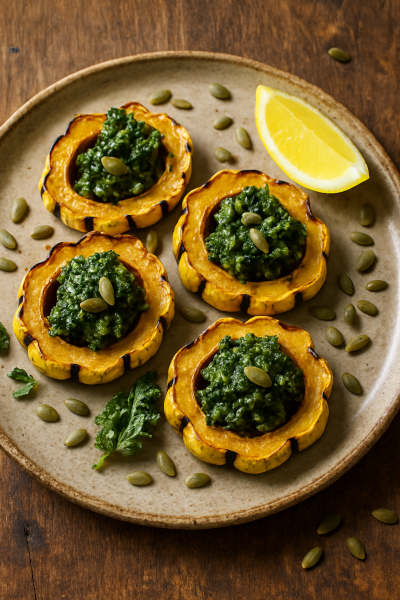
Delicata Rings with Kale Pumpkin Seed Pesto
Yield: 2 servings
Prep Time: 10 minutes
Cook Time: 20 minutes
Total Time: 30 minutes
Ingredients
- 1 delicata squash, sliced into rings, seeds removed
- 2 tsp olive oil
- Pinch salt
Kale Pumpkin Seed Pesto
- 2 cups kale, loosely packed
- 2 tbsp pumpkin seeds
- 1 small garlic clove
- Juice of ½ lemon
- 2 tsp olive oil
- 2 to 3 tbsp water
- Salt to taste
Directions
- Heat oven to 425°F. Toss squash rings with olive oil and salt. Roast 18 to 20 minutes until tender.
- Blend kale, pumpkin seeds, garlic, lemon juice, olive oil, and water until smooth. Season to taste.
- Spoon pesto over warm squash and serve.
Why it helps
Carotenoids in squash pair with healthy fats to improve absorption. Kale adds lutein and minerals.
Estimated nutrition per serving
~330 kcal, 9 g protein, 38 g carbs, 7 g fiber, 17 g fat. Notables: vitamins A and K, magnesium.
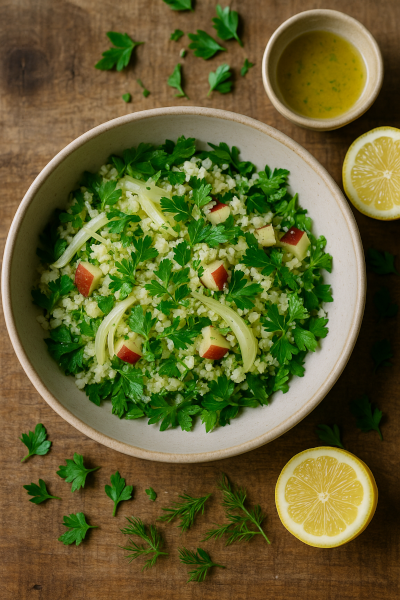
Apple, Fennel and Cauliflower “Tabbouleh”
Yield: 4 servings
Prep Time: 15 minutes
Cook Time: 0 minutes
Total Time: 15 minutes
Ingredients
- 1 small cauliflower, riced
- 1 crisp apple, diced
- ½ small fennel bulb, shaved
- 1 cup fresh parsley, chopped
- 2 tbsp lemon juice
- 1 tbsp olive oil
- Pinch sea salt
Directions
- Rice the cauliflower in a processor or grate by hand. Let rest 30 minutes to maximize beneficial compounds.
- Combine cauliflower rice, apple, fennel, and parsley.
- Whisk lemon juice, olive oil, and salt. Toss and chill before serving.
Why it helps
Raw cruciferous vegetables and parsley bring minerals and light volume. Apple pectin supports gut health.
Estimated nutrition per serving
~120 kcal, 3 g protein, 17 g carbs, 5 g fiber, 5 g fat. Notables: vitamins C and K, folate.
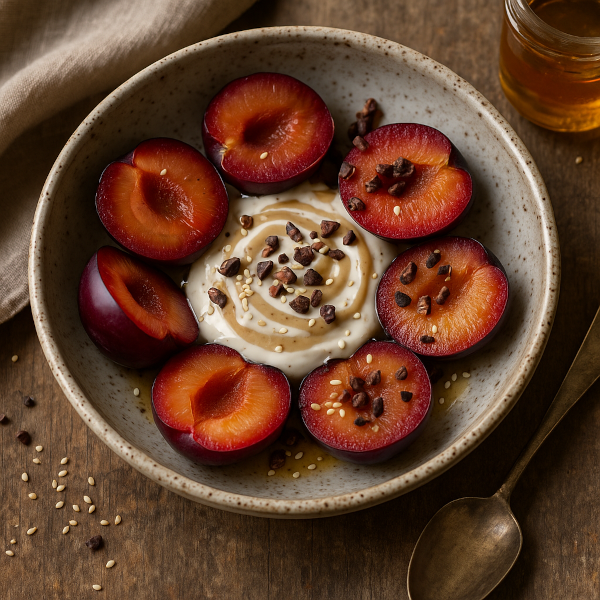
Plums with Tahini Yogurt and Cacao Nibs
Yield: 2 servings
Prep Time: 5 minutes
Cook Time: 0 minutes
Total Time: 5 minutes
Ingredients
- 4 ripe plums, halved
- ½ cup plain plant yogurt
- 1 tbsp tahini
- 1 tsp honey or maple syrup, optional
- 2 tsp cacao nibs
Directions
- Whisk yogurt with tahini and honey if using.
- Spoon over plums and finish with cacao nibs.
Why it helps
Anthocyanins from plums meet protein and calcium from yogurt. Tahini adds sesame lignans and minerals.
Estimated nutrition per serving
~220 kcal, 8 g protein, 30 g carbs, 4 g fiber, 8 g fat. Notables: calcium, iron, polyphenols.

Roasted Beets and Kale Wrap with Citrus Hummus
Yield: 2 wraps
Prep Time: 10 minutes
Cook Time: 0 minutes
Total Time: 10 minutes
Ingredients
- 2 whole grain tortillas
- 1 cup roasted beet wedges
- 2 cups kale, massaged with 1 tsp lemon juice and pinch salt
- ½ cup hummus
- 1 tsp orange zest
- 1 tsp orange juice
- 2 tbsp toasted sunflower seeds
Directions
- In a small bowl mix hummus with orange zest and orange juice.
- Spread hummus on tortillas. Layer kale and beets. Sprinkle sunflower seeds.
- Roll into wraps and slice in half.
Why it helps
Beets and kale bring nitrates, lutein, fiber, and vitamin K. Whole grains add steady energy.
Estimated nutrition per wrap
~330 kcal, 11 g protein, 46 g carbs, 9 g fiber, 11 g fat. Notables: folate, vitamin K, manganese.
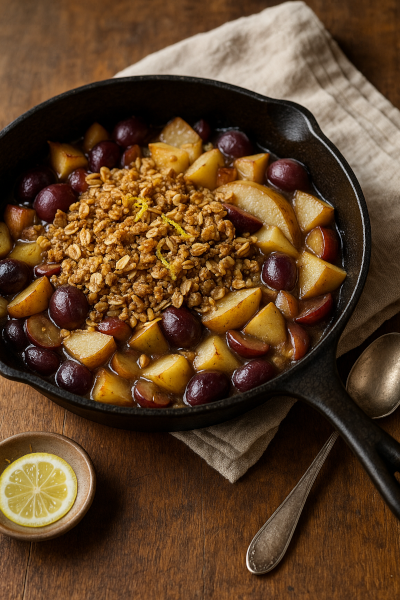
Warm Grape, Pear and Apple Skillet with Oat Crumble
Yield: 4 servings
Prep Time: 10 minutes
Cook Time: 15 minutes
Total Time: 25 minutes
Ingredients
- 1 cup grapes
- 1 pear, diced
- 1 apple, diced
- 1 tsp lemon juice
- Pinch cinnamon
Crumble
- ¾ cup rolled oats
- 2 tbsp almond flour
- 1 tbsp olive oil
- 1 tbsp maple syrup
- Pinch salt
Directions
- Heat oven to 375°F. In an oven safe skillet, simmer grapes, pear, apple, lemon juice, and cinnamon for 5 minutes.
- In a bowl mix oats, almond flour, olive oil, maple syrup, and salt.
- Scatter crumble over fruit. Bake 12 to 15 minutes until golden and bubbly.
Why it helps
Polyphenol rich fruit trio with a light oat topping for fiber and satisfaction without heavy sugar.
Estimated nutrition per serving
~220 kcal, 4 g protein, 36 g carbs, 5 g fiber, 7 g fat. Notables: vitamin C, manganese, polyphenols.
#Healthy Aging #Flexitarian Lifestyle #Functional Foods #Gut Health & Digestion #Recipes #Seasonal
Disclaimer:
This content is for informational purposes only and is not medical advice. Always consult your healthcare provider before making changes to your diet, supplements, or lifestyle, especially if you have existing conditions or take medication.
💌Want plant-based tips each week
Join the Plant Based Flex newsletter. It’s free, and when you confirm your email I’ll send you a 7-Day Kickstart Wellness Bundle to help you thrive beyond 60.
